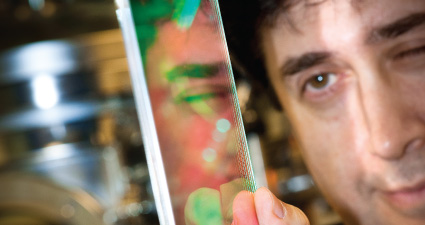ClearVue Technologies, a building-integrated solar company based in Perth is set to roll out its clear solar power harvesting glass windows to the global market, but not before it floats its shares on the national stock market.
The solar PV Company which created the new technology in partnership with the Electron Science Research Institute (ESRI) at Edith Cowan University hopes to raise funds to the tune of $A6 million during the initial public offering (IPO) which was opened on the Australian Stock Exchange on March 6.
The main goal of the IPO is to float 25 million shares to the market at $A0.20c a share and an additional 5 million shares to cushion against over-subscription. The closing date for the IPO is scheduled for April 6 with active trading on the ASX expected to start on April 25.
The BIPV is actually not a new concept though it’s yet to make a significant mark on the global renewable energy market.
Climate of the BIPV market
Several research institutions and companies including Dyesol, an Australian owned company, have been developing inexpensive, commercially viable BIPV solutions such as printable perovskite solar cells.
Interestingly, Elon Musk, Tesla’s boss has also jumped on the bandwagon with his innovative solar roofing tiles—despite their production and installation being delayed and numerous questions keep popping up over their actual cost and efficiency.
ClearVue’s nano technology is unique and unlike others, it generates energy from a flat, clear sheet of glass that ensures transparency—a feature that Victor Rosenberg, the company’s executive chairman describes as a real game changer.
“Nobody actually has got clear glass,” he stated in a March 2017 commentary. “They’ve got either lines or they’ve got dots, or looks like a chessboard with squares of solar panels on the glass.
“We are today, I would proudly say, the only commercial-size clear glass super building material producer.
“Our technology presents a paradigm shift in the way glass will be used in building construction, automobiles, agriculture and speciality products,” Rosenberg noted in a statement earlier this week.
“Glass will no longer be just a component of construction but also a renewable energy resource.”
How clear solar cells work
According to the company’s website, the nano technology utilizes a special “spectral filter” film that enables about 70 per cent of natural light to enter through the window.
On the other side, approximately 90 percent of UV and infrared rays are obstructed or reflected by “inorganic nanoparticles” to the glass’ edges, from where they are gathered by clear solar PV cells that generate electricity.
The solar company claims that at the moment, the windows can produce at least 30W per square metre while delivering insulation from cold and heat as well as UV control. With more Research and Development, ClearVue expects this generation to hit 50W per square metre.
Rosenberg says the clear solar panel product is still at the pre-development phase and production can only start in the next two months.
Clearvue moving into new markets
The company’s latest innovation targets customers in the building and construction industry and in the agricultural and greenhouse sectors.
According to the executive chairman, the company is already working on a prototype greenhouse capable of producing its own power for lighting and desalination.
“Some of our major milestones have been in January 2018,” he told Finance News Network.
“We’ve just signed a collaboration and research agreement with Nanyang Technological University in Singapore, as well as a university in Jerusalem. And they will be working on a research leading towards the printing of solar cells,” he stated.
Rosenberg revealed that the company has a China-based manufacturing partner called ROCKY Glass who will specialise in creating windows from the onset, as ClearVue looks to license the brand across the globe.



